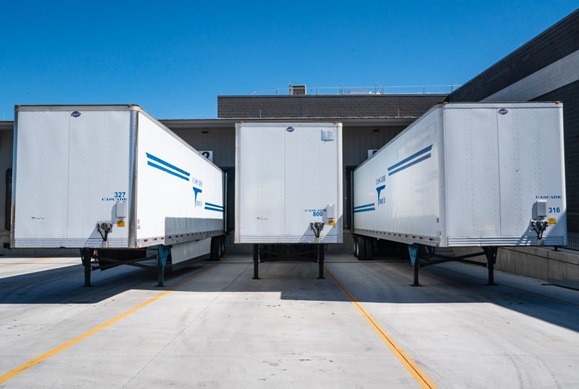Self-storage facilities have proven to be recession-proof through economic downturns. Investing in self-storage units has proven to be relatively safe and profitable. Unlike other forms of investment, self-storage facilities provide more regular cash flow. The steady cash flow comes from the monthly rent payments on storage units St George Utah. Regardless of the economic climate, there’ll always be a need for storage units.
There’s a large variety of avenues to invest in self-storage facilities. You don’t have to run your storage facility to be an industry investor. This variety of investment options allows for passive storage investing.
While focusing on your regular job or another investment, self-storage could well earn you extra income. Passive investing in storage units can help expand your investment portfolio across different sectors. We look into self-storage investing in detail and examine how it can provide passive income.
What Does the Term “Passive Investing” Mean?
Passive investing has always proven to be financially viable. It involves leveraging on relatively stable market trends in passively engaging a commercial venture. It is commonly referred to as a buy-and-hold investment portfolio. It often sees in the long run and generates revenue over time.
It is beneficial to workers who don’t have the time to deal with tiny business details. A well managed passive investment can generate large ROI after some time.
Forms of Self-Storage Units
One of the first things to determine when considering self-storage facilities is the type of storage. It is crucial to stay informed on all the available storage forms. There are a variety of self-storage units to consider. They include mobile storage forms, temperature, and non-temperature-controlled companies, road-front facilities, etc.
Mobile Storage Forms
These involve portable storage units having little space. They can be moved from one location to another at the request of customers.
Vehicle Self-Storage Facilities
These forms of storage units are used in the storage of vehicles. The vehicles range from bikes to boats, ferries, and trucks.
These self-storage facilities used to store vehicles are usually on large estates.
Temperature-Regulated Self Storage Units
There are specific storage goods that have to be preserved at a certain temperature range. The temperature-range is required throughout the year, regardless of climate or weather conditions.
Non-Temperature Regulated Self-Storage Units
These forms of self-storage units are more common all across the nation. They’re used by companies or persons interested in keeping their properties.
Road-Front Self-Storage Units
They’re placed at visible locations to ease product commuting for frequent clients. These self-storage units take advantage of a well accessible site to sustain market visibility.
Look into any of the above units to determine which of them you’ll passively invest.
Things To Note When Choosing a Self-Storage Investment
There are several storage facilities for sale all across the country. You get to choose from a broad range of storage forms and opportunities.
There are several factors to consider in the process of choosing a self-storage facility for investment. However, you can employ professional services to guide you in passive storage investing.
One of the factors to note is the location of the facility. Look out for choice areas in well-populated towns and cities. Most of your customers would come from around a ten-mile radius of your facility. It will help if you situate your company where you can quickly get patronage. Look elsewhere if the facility is not in an area showing high potential for trade.
Also, ensure to compare the investment offer with other competing offers based on price. How much is the alternative storage facility selling a storage unit? Comparing the service offers of the different facilities will help towards getting the best investment offers. You could also compare public storage investing recommendations to private equity investing options.
Having gotten the best passive self-storage investment opportunity, the next thing to look into is financing. Clarify the source of finances for your passive self-storage investing endeavors.
There are three paths to investing in self-storage facilities. They include public storage investing, private equity investing, and owning your storage facility.
Passive Public Storage Investing
This form of self-storage investing refers to investing in storage facilities with publicly listed self-storage firms. You get to purchase storage units shares from public companies through the stock exchange market. Some self-storage investment firms are willing to train in the basics of passive self-storage investing.
Investing with them means you are buying self-storage units of existing storage facilities to reap dividends.
Passive Private Equity Investing
Private equity investing is a more straightforward path to self-storage investing.
It involves investing directly with a private self-storage facility. There might be a storage facility in your community, seeking investors. Check out their investment offers to see if partnering with them fits into your financial goals. You may also find storage facilities through online advertisements, far away from your residence.
The main thing is to do a thorough background search on the company you’re considering.
Running Your Self-Storage Facility Passively
Yes, you can own a self-storage facility and run it passively too.
The first step in this investment path is to own your storage facility. There are self-storage facilities for sale with different investment firms. However, doing so requires professional expertise. You may speak with a consultant on self-storage facilities before purchasing or building your facility.
Before taking up any piece of land, be sure to consider the following.
- Cross-check with the municipal real estate regulations.
- Take note of the climatic and environmental conditions of the area. Look at these factors vis-à-vis the specific type of storage units you want to set up.
- How much is water available around? Water is a good friend for any building. However, see that the land area is not flood-prone. Set up necessary structures to avert the possibility of a flood
- Look into the topography of the land. Taking a proper land survey would reveal unlevel grounds that could aid flooding. Checking the land out with professional land survey services helps to avert multiple potential dangers.
- Look out for include the relative position of the storage facility to road networks. Doing so will help with setting up the right physical orientation for the storage facility.
Middle or small size storage facilities can be managed part-time. You’ll, however, need a full-time manager for larger size storage facilities. Ensure to employ the services of a competent manager to oversee your investment while you’re away.
Self-storage facilities can provide passive income to you while you’re busy with something else. And passive doesn’t mean small. When properly managed, passive investing in storage units can be financially rewarding.


